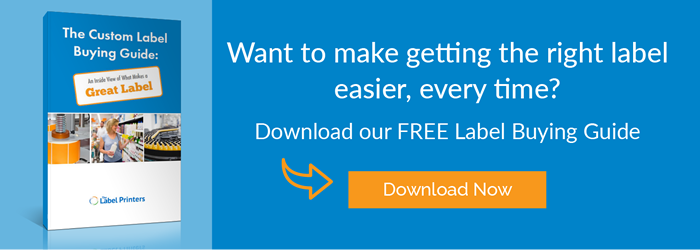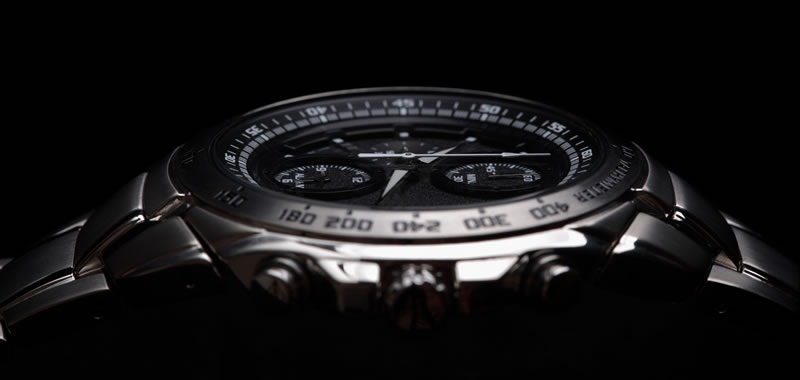
Whether it’s designer handbags, premium vodka, or top-end electronics, luxury products are aspirational and desirable. And it’s not just because of the products themselves: Luxury brands carefully manage the entire consumer experience, from the personal attention of expert salespeople to the gleaming showrooms to the rich feel of the packaging.
The label on a luxury product, then, is not an afterthought. It’s an intrinsic part of the brand. (There’s a good reason the word “label” often is synonymous with luxury brands.)
Your product’s label is one of the first things your customers see. They may feel it under their fingers before they make their purchase. The label may even end up on prominent display in your customers’ homes, inspiring covetous glances from their friends.
How can you use your luxury product label to signal quality and class to your customers? Here are a few tips:
Align with Your Customers
Luxury doesn’t mean the same thing to everyone. Older folks might be attracted by history and heritage, while a younger generation might prefer brands that showcase creativity, authenticity, and sustainability.
Case in point: A Nielsen study of wine buyers found that millennials preferred “bold and distinctive” labels, while Gen Xers and baby boomers opted for more traditional designs.
And we can no longer leave the emerging Generation Z out of the luxury conversation.An influential study conducted by two big-name luxury consulting groups in 2019 cautioned that brands can’t expect Gen Zers (those born between 1997 and 2012, according to Pew Research Center) to follow the same trends as their millennial predecessors.
For example, the members of Generation Z purchase design collaborations between celebrities and luxury product makers more than any other generation (67% compared to the average of 50%). Gen Zers also favor sustainability and actively seek out second-hand luxury products, the study found.
One more interesting fact about Gen Z luxury buyers: This group of young people is demolishing the barrier between traditional luxury brands and premium, fast-fashion, niche, and sports brands, the study reports. It seems that with the right branding and high quality (which can start with your product packaging), almost anything can be considered luxurious.
The Face of Luxury Goods Is Evolving
What this report and others like it tell us is that the meaning of luxury shifts over time. We’ve seen this happen recently as a result of the COVID-19 pandemic. As strict restrictions put a stop to international travel, the traditional global luxury buyer became, by necessity, a local shopper.
In a McKinsey perspective on the luxury goods market before and after the pandemic, analysts noted that prior to the pandemic, between 20% and 30% of luxury industry revenue came from consumers buying outside of their home countries (Asian consumers are particularly eager cross-border shoppers). To reactivate these global shoppers, the analysts recommend, “brands can focus on creating tailored local experiences.”
Even the meaning of “aspirational” – long associated with luxury goods – can evolve. A luxury industry observer writing for Forbes writes that while the term “post-aspirational mindset” is in vogue, consumers have not ceased to seek meaning in the products they purchase. What is changing is consumer values, away from flashy materialism and toward branding with a social purpose (such as diversity, inclusion, or sustainability).
The writer cites a quote from a Bain report: “By 2030, the industry should be drastically transformed. We will not talk of the luxury industry anymore, but of the market for ‘insurgent cultural and creative excellence.’”
What better place to showcase your brand’s excellence than on your luxury product labels?
What Does ‘Luxury’ Mean to Your Brand and Its Customers?
Think about what matters to the buyers you want to attract and what you want your label to say to them. It’s important to create a design that speaks to these values and that reflects the brand story you want to tell.
For example, if you’re aiming for understated elegance, you might want to steer away from busy colors and unconventional shapes. On the other hand, if you consider your brand an enfant terrible in the luxury market, an in-your-face approach might be the way to go.
Think About Durability & Sustainability
One of the hallmarks of luxury is timelessness. A high-quality watch is engineered to keep on ticking from generation to generation. Fine bourbon is aged for years.
Luxury product labels should also withstand the test of time. But, a number of factors can cause luxury labels to crack, peel, or lose their color. Excessive heat or moisture can cause adhesive to give up its grip. Light can fade certain inks. Flimsy label materials can rip when handled roughly.
When choosing the material, inks, and adhesives for luxury labels, it’s important to tell your label printer about the environment your product typically encounters. Is it a wine bottle that will be stored in cool, damp cellars and might be served in an ice bucket? Is it a beauty product that will sit in steamy bathrooms?
Your label printer will use this insight to guide you to durable elements that will help your label hold up over time, use, and exposure.
Sustainability Is Chic
Up until fairly recently, brands that wore their sustainability on their sleeves were considered more Birkenstock than Blahnik. As a result, the luxury goods industry tended to shy away from overt messages of eco-friendliness in their labels and packaging.
However, luxury consumers now prefer to take the guilt out of their pleasures: According to the luxury industry report we highlighted above, 62% of consumers say they choose luxury brands that support sustainability over those that don’t. Compare this to 50% when the same survey was conducted in 2013.
What does sustainability mean in terms of luxury goods? According to the study, luxury buyers are concerned with:
- The environment (37%)
- Animal care (27%)
- Ethical manufacturing (32%)
Product labels can help improve the sustainability of luxury products in several ways:
- Luxury brands can choose sustainable label components, such as FSC-certified paper, biodegradable plastic, and water-based inks.
- The label design can take a minimalist approach, which conserves material, ink, adhesive, and energy for manufacturing and shipping. (Plus, the elegance of minimalist design can be quite eye-catching to the luxury shopper.)
- The label can be removable to allow for the reuse of product packaging. Luxury product containers often make great display pieces on their own.
- Luxury brands can use their labels to inform consumers about recycling and other actions they can take to reduce their environmental impact.
Consider Premium Materials and Techniques
A hint of gold. A flash of silver. Thick, creamy white paper.
Certain materials just say, “luxury.”
Depending on the equipment your label printers have available and the skill of their press operators, you can incorporate metallic foil and inks into your label for an elegant shine. Other luxury label printing techniques include using “crinkly” textured material to give the label for a well-worn rustic look or giving it a handcrafted appearance with a wood veneer. Embossing can give your label subtle three-dimensional texture, drawing eyes and fingers to your logo or product name.
Ask your label printer what premium label-making techniques and materials they offer that can give your product a high-quality finish.
Luxury Materials
Would people be willing to drop $200 on good cognac if it had a flimsy, peeling label? Probably not.
Luxury buyers expect the luxury experience to extend to product packaging, and that includes the label. For a label that says, “This product is worth the cost,” choose materials that feel and look sumptuous. (Though, again, keep your target market in mind. One buyer’s “sumptuous” may be another buyer’s “ostentatious”.)
For inspiration on luxury label materials, look to the classics. For example, our rundown of iconic beauty product labels features the immortal Chanel No. 5 perfume label in all its stark black and white glory.
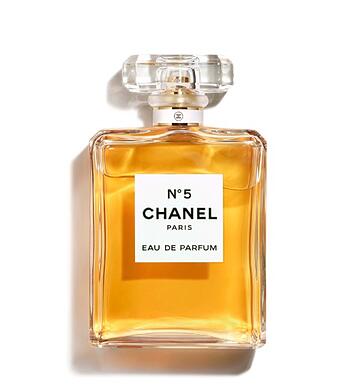
Metallic Foil
Nothing signifies tradition, heritage, and craft more than metal. And among metals, nothing indicates luxury and elegance better than gold, silver, and platinum. Luxury brands have been adding metallic elements to their labels for decades to associate themselves with these enduring qualities.
There are multiple luxury label printing techniques that can give a product label a metallic appearance. Options include metal foils, metallic ink, and actual metal pieces such as plates or wires.
A good example of this is the label for the award-winning Copper Alley single malt whiskey.
Our piece highlighting the best metallic label design included several luxury products, including Basil Hayden’s Kentucky Straight Bourbon Whiskey, which goes big and bold with a stamped copper band encircling the bottle.
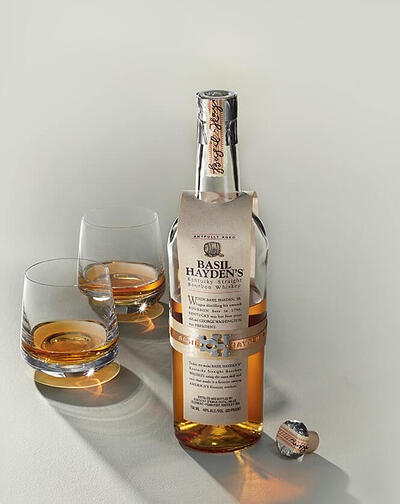
Embossing
Embossing is another way luxury labels instantly convey “high quality” to discriminating consumers. Wine and spirits brands frequently employ embossing to give the impression their products have been awarded a stamp of approval.
French winemaker M. Chapoutier uses embossing for a different purpose (as we covered in our roundup of 10 wine labels that stand out). In a nod to a countryman who was instrumental in developing the Braille writing system, the Chapoutier family stamps Braille text onto all of its bottles.
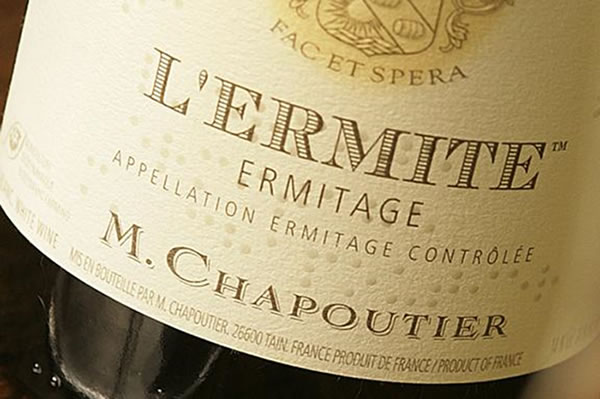
Keep It Simple
With so many options available for helping your luxury product labels stand out, it can be tempting to go all out. But be careful not to overdo it. Busy is out; less-is-more is in.
In this hectic world, consumers crave simplicity. A minimalist, clutter-free design provides a breath of fresh air and lets the quality of your product speak for itself. If attractive enough, consumers may even reuse your bottle or jar as a vase, or to hold trinkets, keeping your brand front and center long after the product is used up.
As you design your label and choose materials, colors, and fonts, remember what we said at the start of this piece: Align with your customers. It’s important to carefully curate your label design and copy choices to just the few elements that will create the greatest impact – otherwise, your brand messaging may get muddied. Don’t be afraid of white space and the impact you can make with just a few carefully crafted words.
If you’ve chosen to work with a professional designer, be sure to communicate your desire for simplicity at the beginning of the label design process.
Protect Your Brand
Luxury brands are among the most frequent targets of counterfeiters and gray market resellers. This is, of course, because consumers highly trust luxury brands. But counterfeiting and gray market sales erode that trust.
You can use your product label to strike back against counterfeiting. Your options include high-tech, overt features that are difficult to replicate, such as holography and color-shifting ink, as well as covert features counterfeiters may overlook, such as microprinting and ink that can be detected only under special lighting.
Adding discreet markings that enable track-and-trace technology can help you keep a closer eye on your supply chain, offering benefits such as easier prevention of product diversion into the gray market.
Brand protection is a major interest among luxury label printing experts. If you’re concerned counterfeiters or the gray market are damaging your brand’s well-earned reputation – or even that they might try to — your first step should be to talk to your label printer about brand protection features that could be incorporated into your labels.
An Amazing Luxury Product Label Is No Luxury – It’s a Necessity
Your luxury brand requires a luxurious consumer experience, and the label is a major part of that experience. By putting careful thought into your label design and working with your label printer to select quality materials, you can imbue your product with the high-end cachet that draws the discerning eye.
Learn how to buy labels with confidence in our free Custom Label Buying Guide.

